 Facebook
Facebook
 X
X
 Instagram
Instagram
 TikTok
TikTok
 Youtube
Youtube
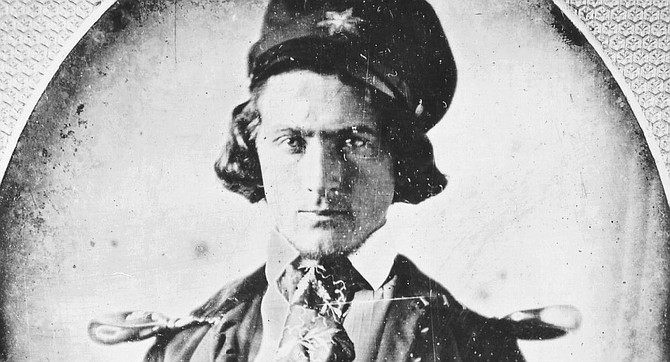
Ysidora's brother-in-law, Don Abel Stearns, gave her the Guajome land grant surrounding Mission San Luis Rey. Couts resigned his commission with the Army and built a ranch on land that “had neither running water nor a tree in sight." His home, “built with the labor of 300 Indians," had the first piano and the first iron safe in California. Legend also claims that two of his paintings “had hung on the walls of Columbus's ships."
By Jeff Smith, August 20, 1998 | Read full article

Little medical care existed in Old Town except for the traditional curandera (curing woman) who relied upon her knowledge of herbal medicines and her experience with things such as childbirth to heal people. Chanita was famous in the Guadalupe Valley for stitching up a man whose wife had cut him with a machete in a domestic fight. He would show his scar to anyone who cared to look at it.
By Therese Adams Muranaka, Dec. 10, 1998 | Read full article
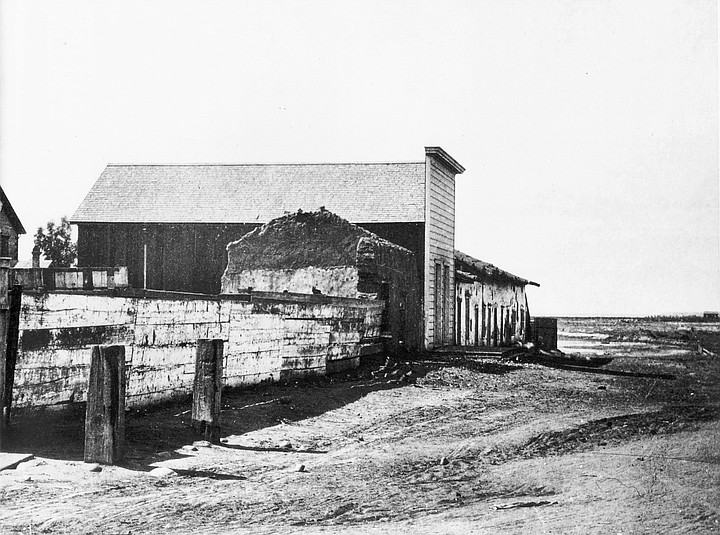
Students learned reading, writing, and arithmetic, geography, orthography (spelling), phonics, distinct articulation, and moral law. First-grade pupils learned "correct ideas respecting school duties, care of property, punctuality.” Second grade: “politeness, truthfulness, chaste language, kindness to animals.” Third grade: "obedience to parents, habits of industry, behavior in public places.” Fourth: “conscience, self-denial, moral courage." Fifth: "hatred, envy, profanity, slander and other vices, proper amusements.” Sixth and Seventh: "duties to man, rights of property, duties of citizenship.”
By Jeff Smith, Aug. 19, 1999 | Read full article

“In 1858, an advertisement in the San Diego Herald reported that the billiard table at Franklin House had been refurbished." Card games pool or billiards and gambling became prevalent in every saloon. The earliest minutes of the Common Council in 1850 made an ordinance that anyone with a monte bank, fan bank, roulette table, or other table “at which any game of hazard shall be played” had to purchase a license costing $35 a month.
By Jeff Smith, June 1, 2000 | Read full article
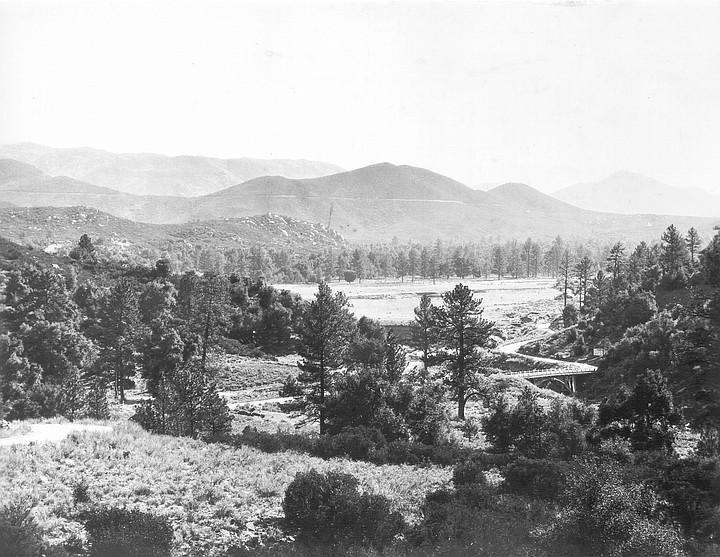
The herd plowed through tall brush. Visibility was so limited, the deputies devised a plan: Ries and Rodriguez would circle in front and turn the herd around. As they rode, however, Kriss spotted a man and ordered him to stop. They exchanged words in English. Kriss drew his pistol, fired, and missed. The man shot at Kriss. Missed. Kriss fired. Missed. The man rode behind a tree, took careful aim, fired, and galloped away.
By Jeff Smith, June 8, 2000 | Read full article
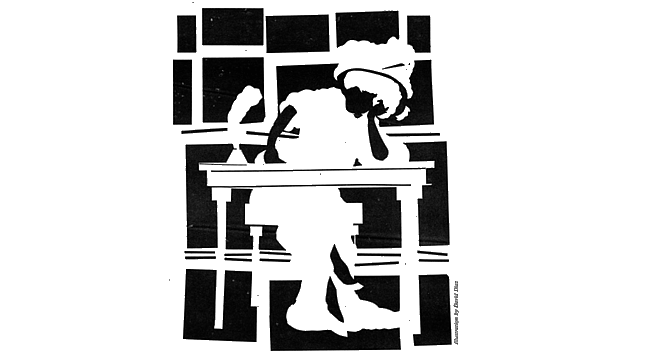
By Rudolph Shappee, Feb. 20, 1986 | Read full article

William Carlson launched the first Cabrillo Day on September 28, 1892. When “Cabrillo” sailed up to Ballast Point, the local dignitaries rushed out on a creaky wharf to welcome him, crowding it until it collapsed and sent them sprawling into the mud. The public laughed at another of Billy’s schemes gone astray but elected him assemblyman anyway and was pleasantly surprised when the fledgling legislator passed the bar exam the day after his election.
By Carol Bowers, July 9, 1987 | Read full article
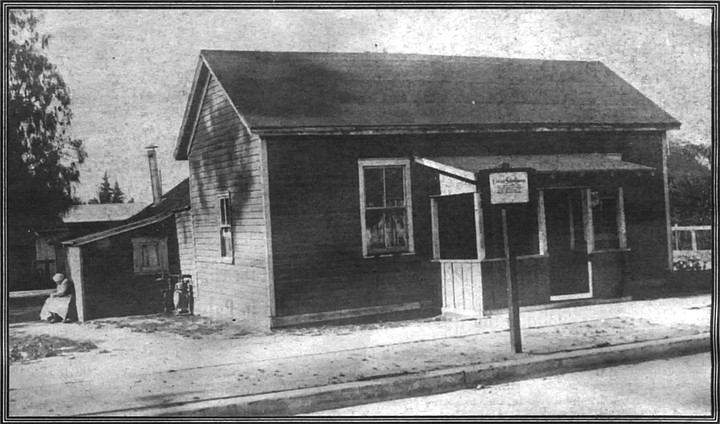
She had been in San Diego for about a week, when a widow finally offered to rent her “two rooms in the second story of her house on the plaza.” (A replica of this building dominates the west side of the plaza today and serves as the present-day park headquarters.) Mary was to pay $2 a month for the two rooms, each about 10 by 12 feet, with two large glass doors opening onto a pleasant veranda.
By Jeannette De Wyze, April 9, 1992 | Read full article
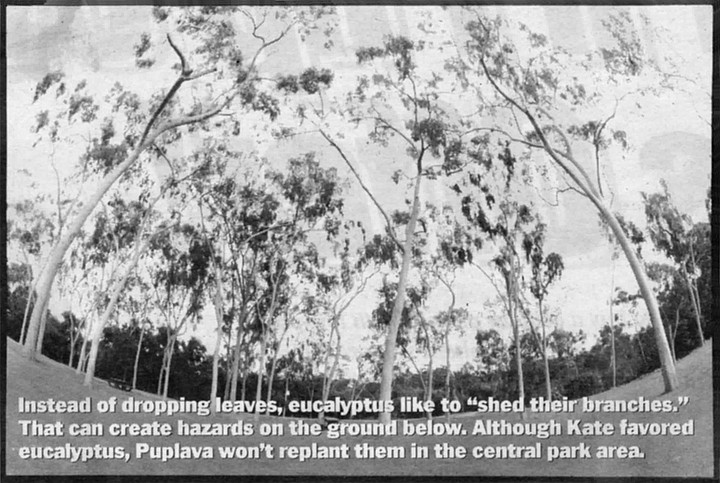
“Kate in her tweeds, her big shoes, her felt hat pulled low over her eyes, and with her nape-locks beckoning to her humped back, stood by the car to say good-bye. She kissed my mother. Impulsive tears filled her eyes and her voice. ‘You have two dear girls to be with you. I never had any. Take fine care of each other.’ Alone, she stood waving until we were out of sight.”
By Phyllis Orrick, April 13, 1995 | Read full article
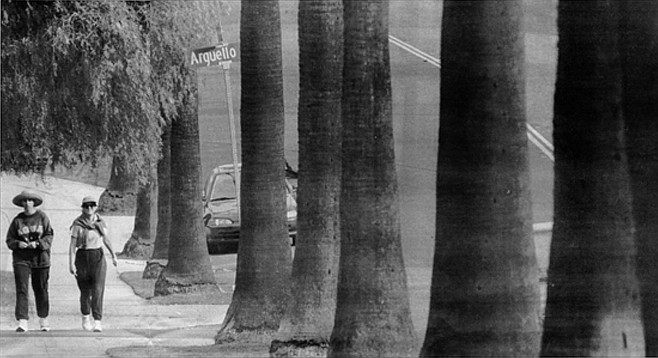
Mission Hills’ position overlooking San Diego Bay proved useful to American defense strategists during World War II. Soldiers set up military emplacements and erected an observation post in the statuary garden of Union Street homeowner Al Wuest. A “barrage balloon” was kept at the foot of the Redwood Street hill at India Street; every evening it would be raised to the skies, trailing nets and ropes, in order to entangle any enemy aircraft.
By Susan Vaughn, Feb. 5, 1998 | Read full article

“According to Leland Stanford, who wrote a historical sketch of medical practices in San Diego, this city provided greater opportunity for quackery than any other. San Diego's climate had appealed to sufferers of pulmonary disease. It was advertised that over half the people in this city were consumptive. As a result, San Diego had more than its share of charlatans, who sold their nostrums, inhalators, and cures, such as a 'diet of dog meat.'”
By Jeff Smith, July 9, 1998 | Read full article
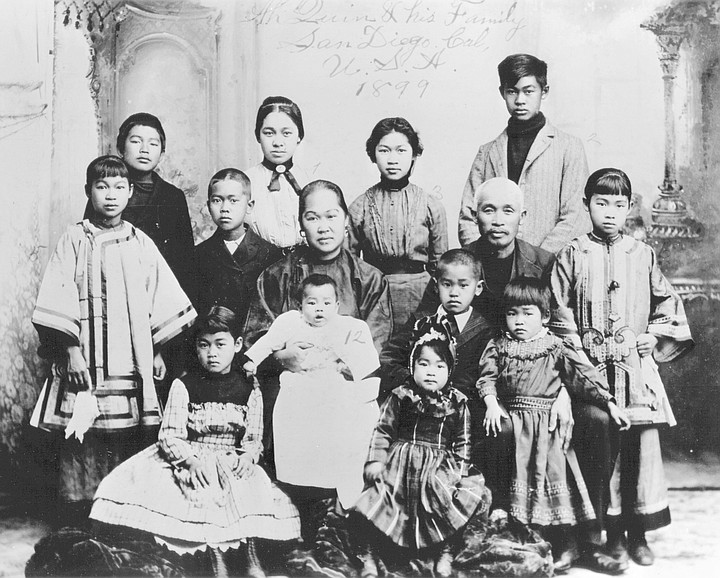
In 1880, Marston and Camp urged Quin to return to San Diego. The California Southern Railroad was under construction, from National City to San Bernardino. Because the labor force was largely Chinese, Marston and Camp felt that "Quin's bilingual talents and business training made him an ideal selection for labor contractor, despite his relative inexperience...thus began an extraordinary rise from house servant to merchant and contractor." He opened a store in San Diego's Chinatown.
By Jeff Smith, July 30, 1998 | Read full article


Ysidora's brother-in-law, Don Abel Stearns, gave her the Guajome land grant surrounding Mission San Luis Rey. Couts resigned his commission with the Army and built a ranch on land that “had neither running water nor a tree in sight." His home, “built with the labor of 300 Indians," had the first piano and the first iron safe in California. Legend also claims that two of his paintings “had hung on the walls of Columbus's ships."
By Jeff Smith, August 20, 1998 | Read full article

Little medical care existed in Old Town except for the traditional curandera (curing woman) who relied upon her knowledge of herbal medicines and her experience with things such as childbirth to heal people. Chanita was famous in the Guadalupe Valley for stitching up a man whose wife had cut him with a machete in a domestic fight. He would show his scar to anyone who cared to look at it.
By Therese Adams Muranaka, Dec. 10, 1998 | Read full article

Students learned reading, writing, and arithmetic, geography, orthography (spelling), phonics, distinct articulation, and moral law. First-grade pupils learned "correct ideas respecting school duties, care of property, punctuality.” Second grade: “politeness, truthfulness, chaste language, kindness to animals.” Third grade: "obedience to parents, habits of industry, behavior in public places.” Fourth: “conscience, self-denial, moral courage." Fifth: "hatred, envy, profanity, slander and other vices, proper amusements.” Sixth and Seventh: "duties to man, rights of property, duties of citizenship.”
By Jeff Smith, Aug. 19, 1999 | Read full article

“In 1858, an advertisement in the San Diego Herald reported that the billiard table at Franklin House had been refurbished." Card games pool or billiards and gambling became prevalent in every saloon. The earliest minutes of the Common Council in 1850 made an ordinance that anyone with a monte bank, fan bank, roulette table, or other table “at which any game of hazard shall be played” had to purchase a license costing $35 a month.
By Jeff Smith, June 1, 2000 | Read full article

The herd plowed through tall brush. Visibility was so limited, the deputies devised a plan: Ries and Rodriguez would circle in front and turn the herd around. As they rode, however, Kriss spotted a man and ordered him to stop. They exchanged words in English. Kriss drew his pistol, fired, and missed. The man shot at Kriss. Missed. Kriss fired. Missed. The man rode behind a tree, took careful aim, fired, and galloped away.
By Jeff Smith, June 8, 2000 | Read full article

By Rudolph Shappee, Feb. 20, 1986 | Read full article

William Carlson launched the first Cabrillo Day on September 28, 1892. When “Cabrillo” sailed up to Ballast Point, the local dignitaries rushed out on a creaky wharf to welcome him, crowding it until it collapsed and sent them sprawling into the mud. The public laughed at another of Billy’s schemes gone astray but elected him assemblyman anyway and was pleasantly surprised when the fledgling legislator passed the bar exam the day after his election.
By Carol Bowers, July 9, 1987 | Read full article

She had been in San Diego for about a week, when a widow finally offered to rent her “two rooms in the second story of her house on the plaza.” (A replica of this building dominates the west side of the plaza today and serves as the present-day park headquarters.) Mary was to pay $2 a month for the two rooms, each about 10 by 12 feet, with two large glass doors opening onto a pleasant veranda.
By Jeannette De Wyze, April 9, 1992 | Read full article

“Kate in her tweeds, her big shoes, her felt hat pulled low over her eyes, and with her nape-locks beckoning to her humped back, stood by the car to say good-bye. She kissed my mother. Impulsive tears filled her eyes and her voice. ‘You have two dear girls to be with you. I never had any. Take fine care of each other.’ Alone, she stood waving until we were out of sight.”
By Phyllis Orrick, April 13, 1995 | Read full article

Mission Hills’ position overlooking San Diego Bay proved useful to American defense strategists during World War II. Soldiers set up military emplacements and erected an observation post in the statuary garden of Union Street homeowner Al Wuest. A “barrage balloon” was kept at the foot of the Redwood Street hill at India Street; every evening it would be raised to the skies, trailing nets and ropes, in order to entangle any enemy aircraft.
By Susan Vaughn, Feb. 5, 1998 | Read full article

“According to Leland Stanford, who wrote a historical sketch of medical practices in San Diego, this city provided greater opportunity for quackery than any other. San Diego's climate had appealed to sufferers of pulmonary disease. It was advertised that over half the people in this city were consumptive. As a result, San Diego had more than its share of charlatans, who sold their nostrums, inhalators, and cures, such as a 'diet of dog meat.'”
By Jeff Smith, July 9, 1998 | Read full article

In 1880, Marston and Camp urged Quin to return to San Diego. The California Southern Railroad was under construction, from National City to San Bernardino. Because the labor force was largely Chinese, Marston and Camp felt that "Quin's bilingual talents and business training made him an ideal selection for labor contractor, despite his relative inexperience...thus began an extraordinary rise from house servant to merchant and contractor." He opened a store in San Diego's Chinatown.
By Jeff Smith, July 30, 1998 | Read full article
Comments